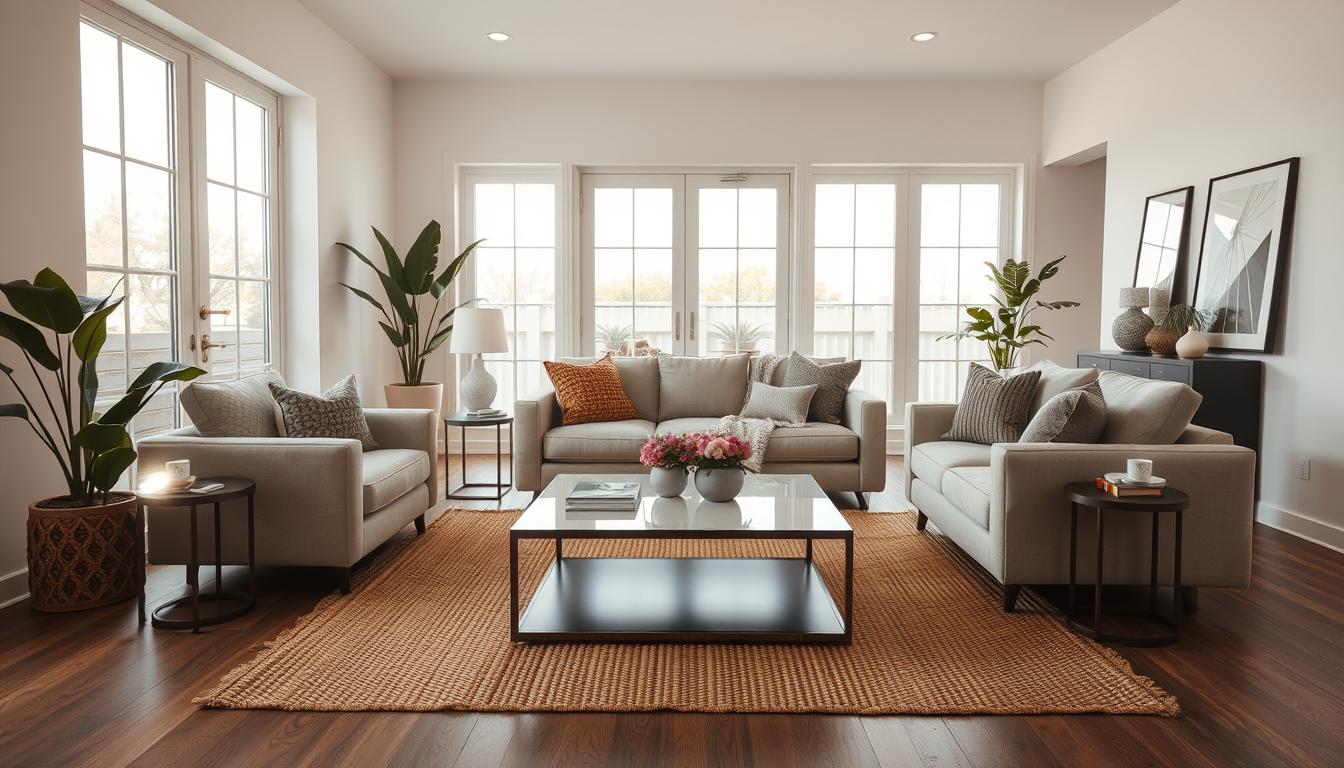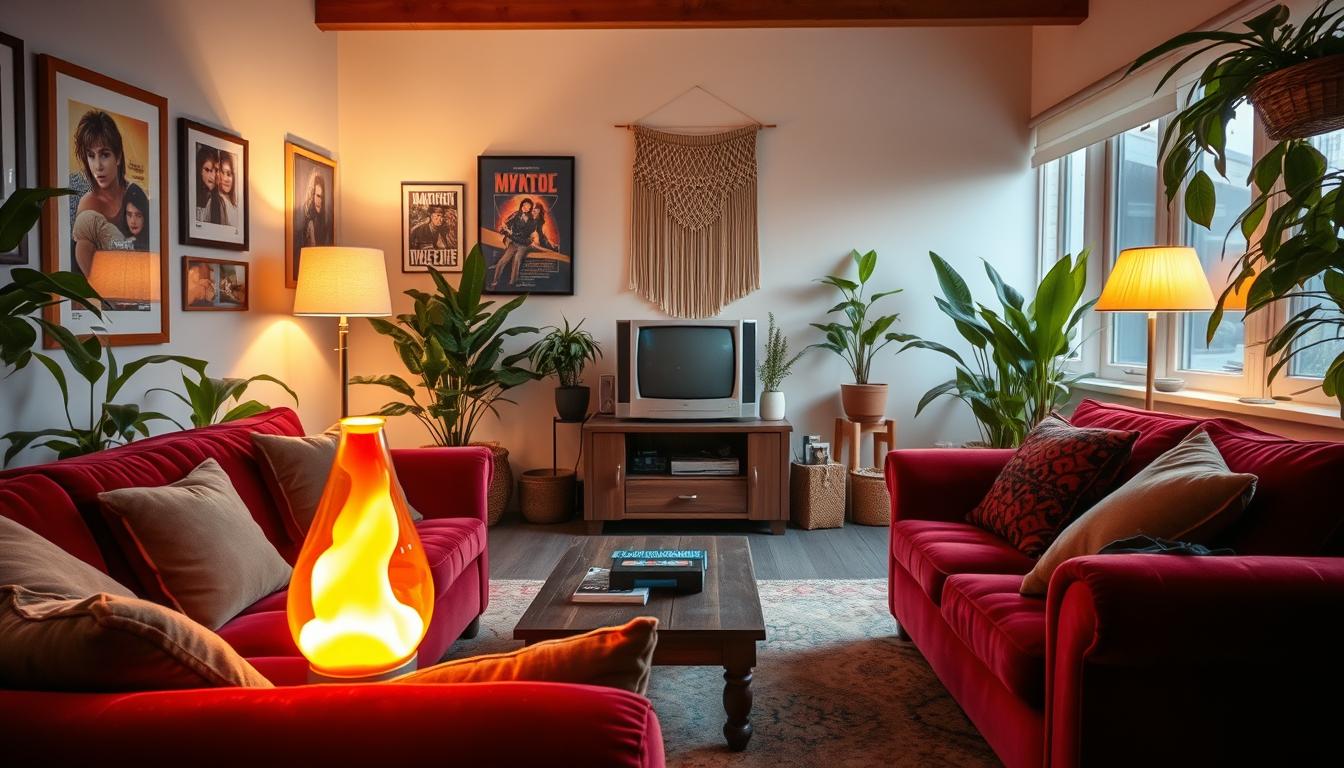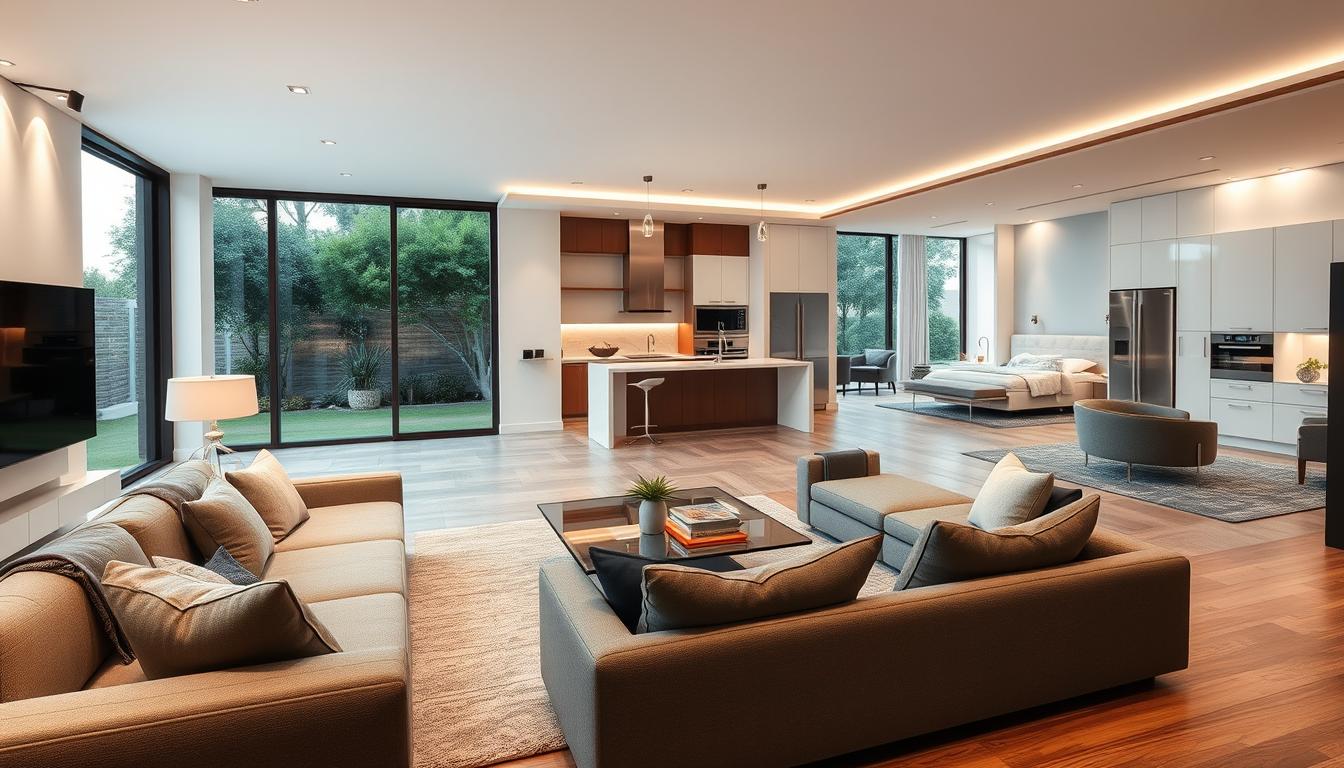A well-designed home.interior1 can make you feel better and work better. Studies show that a well-arranged space can clear your mind and lower stress.
We think making your home.interior better is more than just looks. It’s about making a space that works well and feels welcoming. Our advice helps you turn your space into a place you love.
Key Takeaways
- Understand the importance of a well-designed home.interior1
- Learn how to create a functional and stylish space
- Discover how to reflect your personal style in your home.interior
- Get insights into the latest design trends and advice
- Transform your space into a beautiful and inviting haven
Understanding the Importance of Interior Design
Interior design is more than looks; it’s about making our homes better for us. A well-designed home can change our mood, how productive we are, and our health.
How Design Affects Our Mood
The design of our homes can really affect how we feel. For example, natural light and color schemes can make us feel better or worse. Using bright colors and lots of light can make our homes feel more welcoming.
Also, how furniture is arranged and the room’s layout can affect how we use the space. A well-thought-out layout can help us connect with others. But a messy or poorly designed space can make us feel alone or upset.
The Role of Color in Home Interiors
Color is key in interior design, changing how a room feels. Cool colors like blue and green can calm us down. Warm colors like red and orange can make us feel more energetic.
When picking colors, think about the room’s purpose and the mood you want. Choosing colors that fit the room’s function can make it more beautiful and useful.
Space Planning Fundamentals
Good space planning is vital in interior design. It means making a layout that works well and is efficient. This includes thinking about how people move, where furniture goes, and where to store things.
By planning the space well, we can make our homes more useful and cozy. This not only makes our homes better but also makes life more enjoyable.
Key Elements of Home Interior Design
To make your home look better, focus on the basics. Home styling and interior decorating are more than looks. They make your home functional and comfy.
Furniture Selection and Arrangement
Choosing and placing furniture is key to a room’s feel. Picking the right pieces that are both useful and stylish matters a lot. Think about how big the furniture is compared to the room and how people move around.
A good furniture layout can really change how your home feels. For example, setting up a seating area can make your home feel more welcoming and friendly.
Choosing the Right Lighting Fixtures
Lighting is also very important in home design. The right lights can change a room’s mood. Use a mix of overhead lights, table lamps, and floor lamps for a layered look.
“Good lighting is not just about visibility; it’s about creating ambiance and highlighting the best features of your home.”
Incorporating Textiles and Fabrics
Textiles and fabrics add warmth and texture to your home. Using different materials like velvet, linen, and cotton can make your design richer. Add throw pillows, blankets, and rugs to bring in new textures and patterns.
- Choose fabrics that are comfy and last long.
- Mix different textures for a more interesting look.
- Use rugs to mark off areas in open spaces.
By focusing on furniture, lighting, and textiles, you can make your home welcoming and stylish. It will show off your personal taste.
Popular Interior Design Styles
Several interior design styles are popular for their beauty and appeal. Whether you’re renovating your home or looking for inspiration, knowing these styles can guide your choices.
Modern Minimalism: Less is More
Modern minimalism is all about simplicity and clean lines. It uses a few colors and focuses on function and comfort. This style makes your living space calm and tidy.
- Use of neutral colors
- Minimal ornamentation
- Emphasis on natural light
To bring modern minimalism into your home, start by decluttering. Choose only the essential furniture pieces.
Traditional Elegance: Timeless Designs
Traditional elegance is known for its classic looks, rich colors, and detailed designs. It brings warmth and sophistication, making your home feel cozy and welcoming.
| Characteristics | Elements |
|---|---|
| Classic furniture | Ornate carvings, luxurious fabrics |
| Rich color palette | Deep reds, emerald greens, navy blues |
| Ornate details | Crown molding, intricate patterns |
To achieve traditional elegance, add classic furniture and rich fabrics to your decor.
Eclectic Styles: Embracing Diversity
Eclectic styles celebrate individuality by blending different design elements. This creates a unique and personalized space. It’s ideal for those who want to show their personality through their home decor.
To create an eclectic look, mix vintage and modern pieces. Don’t hesitate to try out different colors and textures.
Understanding these popular interior design styles can help you find the right inspiration for your home renovation. Whether you like the simplicity of modern minimalism, the warmth of traditional elegance, or the uniqueness of eclectic styles, there’s a style for everyone.
The Power of Color in Home Interiors
Color is key to making your home feel welcoming and balanced. It affects our mood and how we feel in our spaces. Choosing the right colors can make your home look better and work better too.
Understanding Color Psychology
Color psychology is about how colors affect us. For example, blue makes us feel calm, while red energizes us. When picking colors for your home, think about how they’ll make you and your guests feel.
Creating Color Palettes
Creating a color palette means picking colors that go well together. A good palette makes your home look better. Start with a main color, then add secondary colors that match it. Use the 60-30-10 rule for a balanced look.
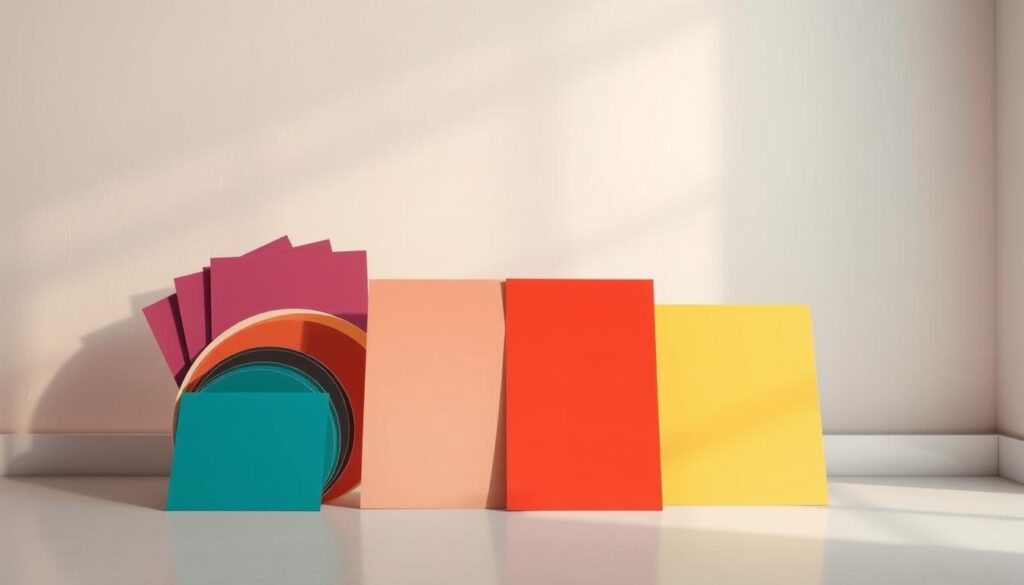
For example, a neutral color like beige or gray is great for a room makeover. It’s a versatile choice for your furniture and decor.
Accent Walls and Focal Points
Accent walls and focal points add interest to a room. An accent wall is a different color that draws the eye. Focal points can be furniture, art, or other decorations. They help make your interior balanced and engaging.
| Color | Psychological Effect |
|---|---|
| Blue | Calmness, Serenity |
| Red | Energy, Stimulation |
| Green | Balance, Growth |
| Yellow | Happiness, Optimism |
By using color psychology and design, you can improve your home’s interior. Whether it’s a big project or just a room makeover, color is important. It makes your home more inviting and comfortable.
Furniture and Accessories That Transform Spaces
Turning your home into a stunning space is easier than you think. The right furniture and accessories can make your home look better and feel more welcoming. We’ll show you how to pick the perfect pieces to change your space.
Statement Pieces to Make an Impact
Bold, eye-catching items can instantly make any room look better. These can be colorful rugs, unique lighting, or striking art. Choose items that fit your home’s style and color to match your decor.
A vibrant artwork can brighten a room with neutral colors. A bold, patterned rug can add texture and interest to a simple room.
Mixing and Matching Textures
Mixing different textures adds depth and interest to your home. Combining smooth and rough, soft and hard materials creates a dynamic look. For example, a sleek leather sofa with a chunky throw blanket adds coziness to a modern room.
When mixing textures, balance contrasting elements to avoid too much. Start with a main texture, like a wooden floor. Then add complementary textures with furniture and accessories, like a plush rug and a velvet chair.
Functional Furniture for Small Spaces
In small spaces, functionality is crucial. Multi-functional furniture helps use space wisely while keeping style. Look for pieces like storage ottomans, nesting tables, or wall-mounted shelves that do more than one thing.
A storage ottoman can be a seat and a place to store clutter. A nesting table set offers extra space when needed, without taking up too much room.
Importance of Natural Elements in Home Design
Natural elements are key in home design, making spaces more welcoming and sustainable. They help create homes that look good and are good for our health.
Bringing Nature Indoors through Biophilic Design
Biophilic design brings nature into our homes. It’s about reconnecting with nature. Biophilic design uses natural light, air, and materials like wood and stone.
Using biophilic design can improve air quality and reduce stress. It also boosts our brain power. For example, natural materials make rooms feel cozy and inviting.
Selecting the Right Plants for Indoor Spaces
Plants are a great way to add nature indoors. Think about the light, care, and look you want. Low-maintenance plants like succulents are perfect for busy people. Flowering plants add color and life to rooms.
Plants also make our homes healthier by cleaning the air and controlling humidity. Choosing the right plants can make your home look and feel better.
The Impact of Natural Light on Home Ambiance
Natural light is vital in home design. It makes rooms feel bigger and more welcoming. It also cuts down on the need for artificial lights. Strategic window placement and mirrors help use natural light better.
Natural light also boosts our mood, energy, and immune system. Designing your home to let in more natural light makes it healthier and more comfortable.
DIY Interior Design Tips for Homeowners
Make your home look better with these easy and affordable DIY tips. We all want to update our homes without big changes. Here, we’ll show you simple DIY projects to make your home look great.
Budget-Friendly Design Ideas
Creating a beautiful home doesn’t have to cost a lot. Here are some cheap design ideas:
- Give old furniture a new look with paint or new handles.
- Add color and texture with throw pillows and blankets.
- Make your own wall art with prints, paintings, or photos.
These ideas save money and make your home special.
Simple Upgrades for a Fresh Look
Just a few simple changes can make your home look new. Try:
- Change old lighting to modern styles.
- Update cabinet and drawer handles.
- Add plants or fresh flowers for a natural feel.
These small changes can really change how your home feels.
Tools and Resources for DIY Projects
To do DIY projects well, you need the right tools and resources. Here are some must-haves:
| Tool | Description |
|---|---|
| Hammer | Great for hanging pictures or putting furniture together. |
| Tape Measure | Important for measuring rooms, furniture, and materials. |
| Paintbrushes | For painting walls, furniture, and other DIY projects. |
By using these DIY interior design tips, you can make your home beautiful and useful without spending too much. The secret to great DIY projects is being creative and willing to get your hands dirty.
Smart Home Technology and Interior Design
Smart home technology is changing how we live and interact with our homes. Our homes are becoming more connected, efficient, and cozy. This is thanks to advancing technology.
Smart home tech can also improve our interior design. It makes our homes more organized and useful. For example, smart lights can be controlled from anywhere, changing our home’s mood easily.
Integrating Technology Seamlessly
To mix technology smoothly with our design, we need to think about both looks and function. We should pick devices that look good and work well. For instance, smart thermostats can match our decor, and smart speakers can hide in plain sight.
Key considerations for seamless integration include:
- Choosing devices with a minimalist design
- Placing devices in a way that they are accessible but not obtrusive
- Ensuring that devices are user-friendly and intuitive
Smart Lighting and Climate Control
Smart lighting and climate control can greatly improve our living space. Smart lights adjust to the day and natural light, while smart thermostats learn our comfort levels.
The benefits of smart lighting and climate control include:
- Energy efficiency through optimized usage
- Enhanced comfort by maintaining a consistent environment
- Increased safety through automated lighting
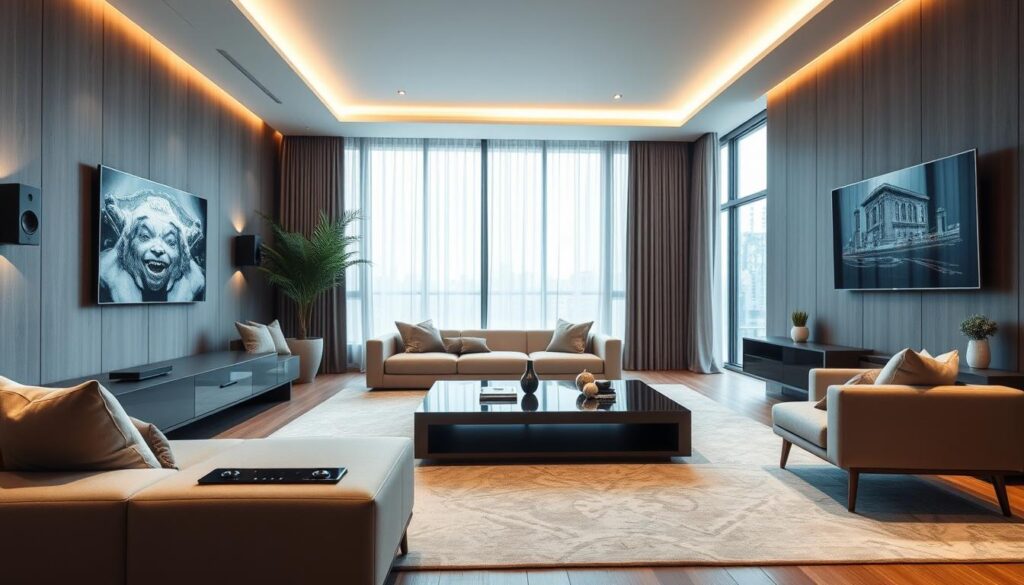
Security Considerations in Design
As we add more tech to our homes, security is crucial. This includes physical security like smart locks and cameras, and also protecting our devices and data from cyber threats.
To ensure security in smart home design, consider:
- Using strong, unique passwords for all devices
- Regularly updating software and firmware
- Implementing a robust cybersecurity framework
By using smart home tech and keeping these tips in mind, we can make our homes beautiful, useful, safe, and efficient.
Maintaining and Updating Your Home Interior
To keep your home looking great, stay up-to-date with trends. Adding new elements and updating decor can make your space feel fresh and welcoming.
Staying Current with Seasonal Trends
Seasonal trends can change how your home looks. Update your decor with the latest colors, textures, and patterns to keep it modern.
Routine Maintenance for a Long-Lasting Interior
Regular care is key to keeping your interior looking good for longer. This means dusting, polishing, and checking your furniture and fixtures for damage.
Knowing When to Seek Professional Help
If you’re not sure how to update your home, get help from a professional designer. They can offer personalized advice and help you achieve your dream room makeover.

